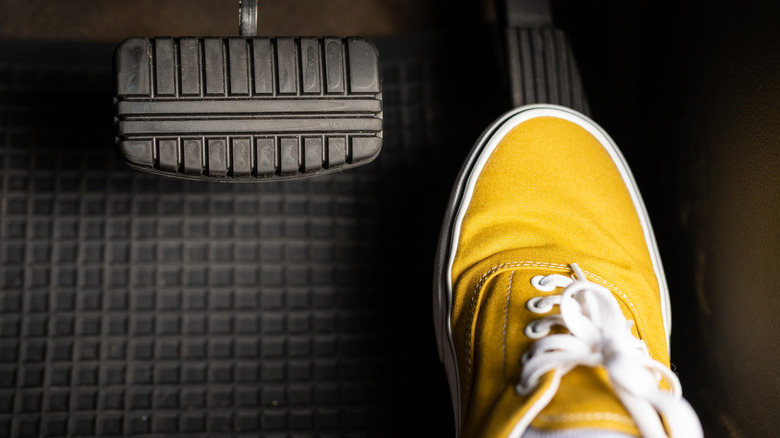3 Signs Your Car Engine Is Flooded (And How To Fix It)
It's a common misconception that modern fuel-injected engines are more immune to flooding than older carbureted motors. Given the right (or wrong) conditions, any internal combustion engine –- whether carbureted or not -– could flood with gasoline when too much fuel or too little air is inside the combustion chamber.
For instance, repeatedly cranking the engine while it persistently refuses to start will cause flooding, since the injectors are filling the combustion chamber with fuel with each crank. Since the engine did not start and burn off the air/fuel mix, it will flood with gas, exacerbating the starting issue.
Engine flooding is more prevalent during the cold winter, especially when starting the car and turning it off again before the engine can warm up properly. When cold, a modern internal combustion engine generally runs on a rich air/fuel ratio.
But if you turn off the engine immediately without warming it up, some vaporized gasoline will remain in the combustion chamber. And if you try to start it again, more fuel will enter inside, causing a flooded engine.
What are the symptoms of engine flooding?
The first telltale sign of a flooded car engine is the smell of gas emanating from the engine bay or the tailpipe. Since the combustion chambers are brimming with gas, the excess fuel will remain inside the engine and emit a strong gasoline odor. If your car refuses to start and the entire thing smells of gas when cranking, you're most likely dealing with a flooded engine.
Moreover, if you notice an unusual whirring sound or the engine sounds different when cranking, the engine might be flooded with gas. In addition, engine flooding could cause the engine to crank faster than usual. All of these could point to a lower compression ratio. A flooded engine causes oil from the piston rings to dilute or "wash out" and effectively lower the compression ratio, a condition known as "bore wash."
Lastly, a no-start condition happens when dealing with a flooded engine. Your engine requires a specific air/fuel ratio to start and run properly. Too much gas will mess up the golden ratio. In some cases, the engine will start and die again.
How to start a flooded engine
If your car has a flooded engine, it's not the end of the world. Read the easy steps below to get your vehicle up and running again.
- Step 1: Pop open the hood and wait 10 to 15 minutes for the excess fuel to evaporate before attempting to crank the engine again. This step is crucial if the vehicle emanates the fumy smell of gasoline, the classic sign of engine flooding.
- Step 2: Crank the engine while your right foot pushes the accelerator pedal. Pushing the pedal allows more air to enter the combustion chamber and helps bring the air/fuel ratio back to the right mix.
- Step 3: Continue cranking (while pushing the accelerator pedal) for about ten seconds until the engine comes to life.
- Step 4: Allow the engine to rev higher after starting by controlling the gas pedal. However, keep in mind not to rev the engine excessively when cold. Keep it at 1,500 to 2,000 rpm and let it stay there for a few more seconds, so the motor can burn off the excess gas.
If the engine still refuses to start after following the above steps, there may be more issues with your car's engine. The spark plugs could be soaking in gas, which is not good since they could ground instead of firing a spark. In addition, you might need a new air filter. When in doubt, consult a mechanic or the nearest service garage.


